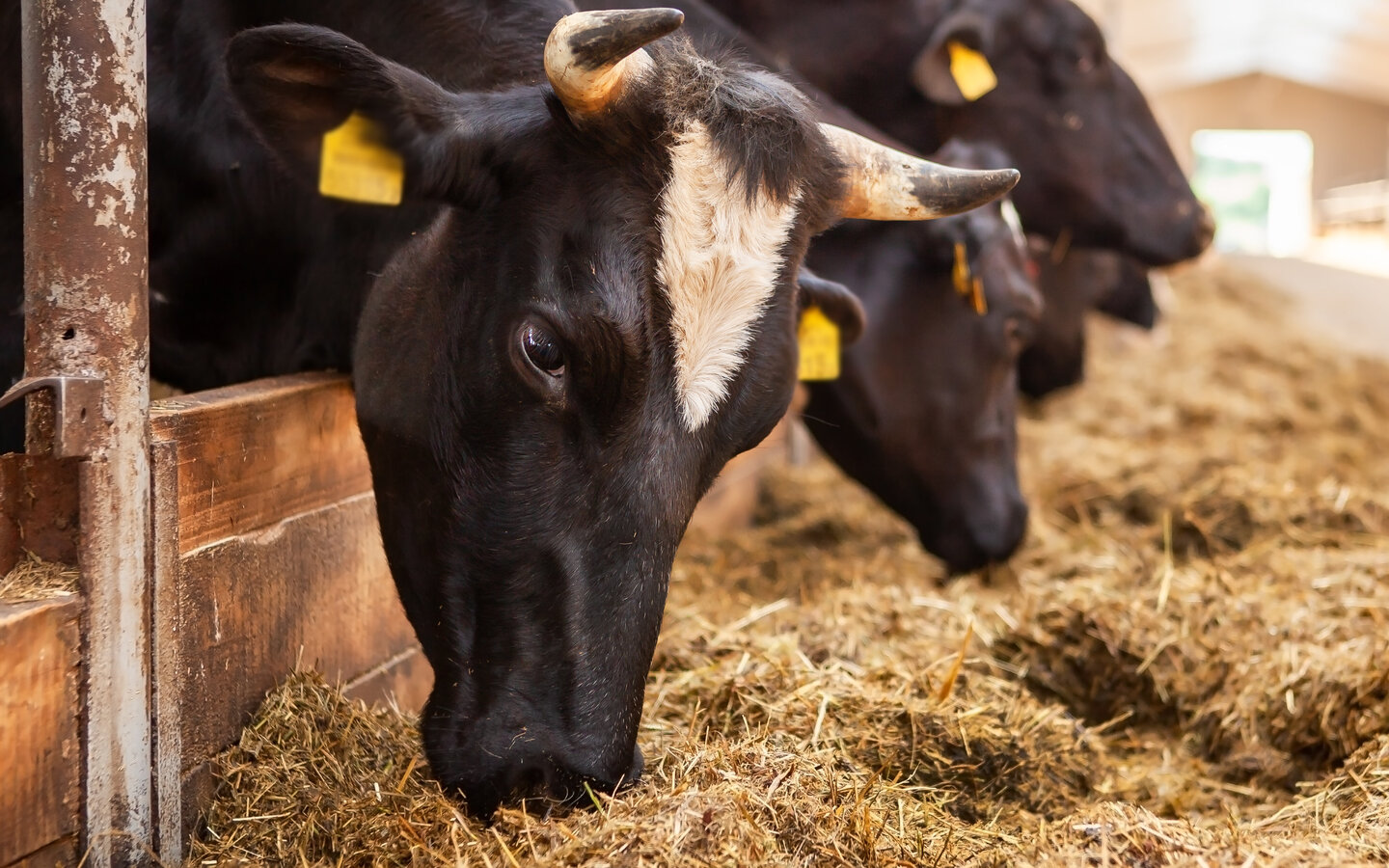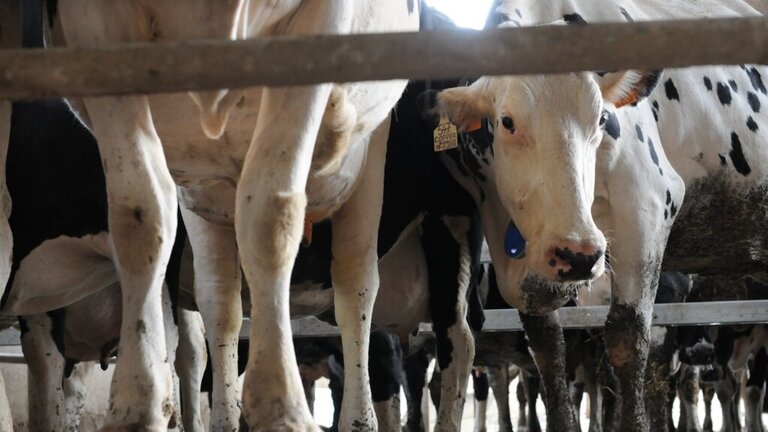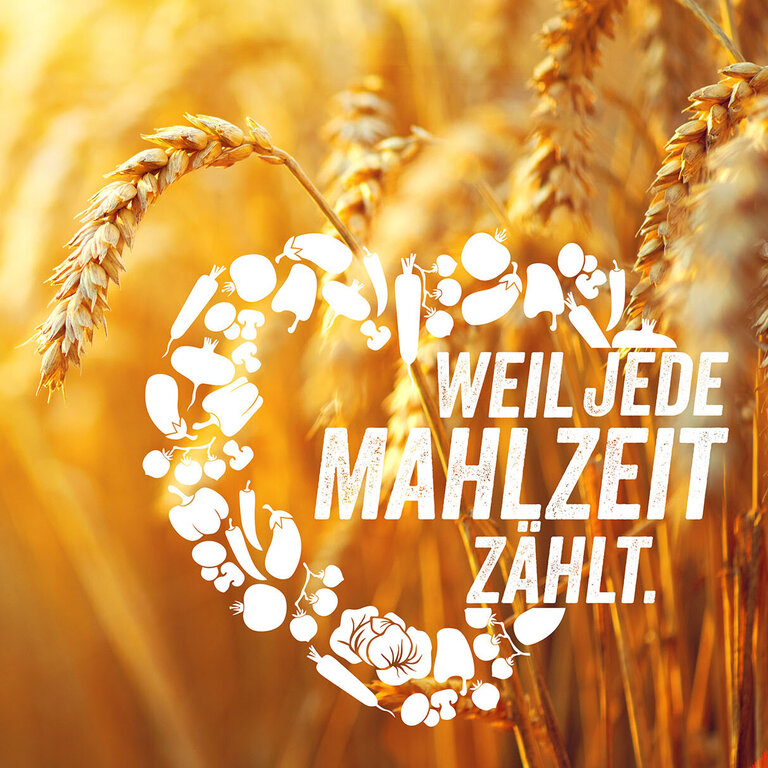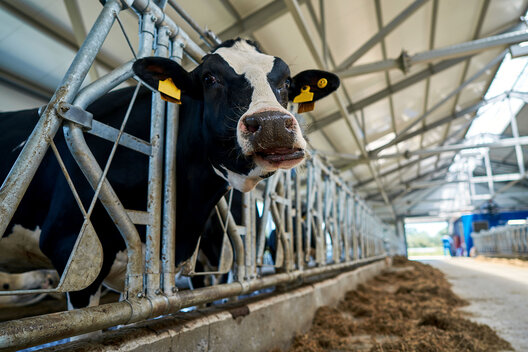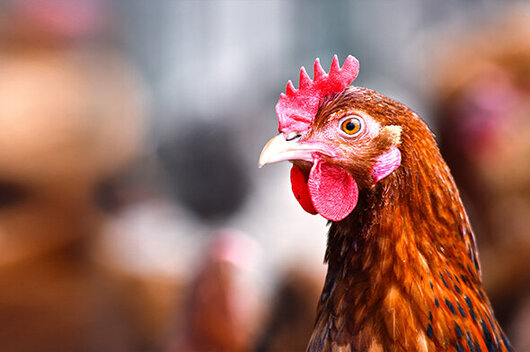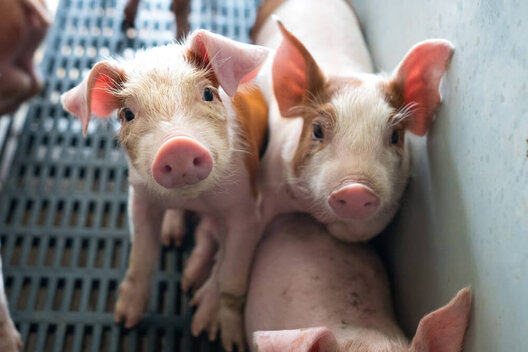Animals in the dairy industryThe suffering of dairy cows
Cows suffer enormously for the milk we humans consume. Germans consume more than 46 kilograms of milk per capita every year - not including other dairy products such as butter, cheese and yogurt. Dairy cows are bred for maximum performance to meet the high demand in this country, but also for export all over the world.
Around four million dairy cows live in Germany. The pictures on milk packaging and advertisements make us believe that they lead a happy life on green pastures. But the reality of a dairy cow is usually anything but idyllic.
kilograms of milk are consumed by Germans per capita on average each year - not including dairy products.
months is the approximate age of a dairy cow when she is inseminated for the first time. The cow is then pregnant for nine months.
years is the average age of a dairy cow. They can actually live to be 20 years old.
liters of milk per day are produced by some highly bred cattle breeds such as the German Holstein today.
Dairy cows are almost permanently pregnant
Of course, cows don't just give milk because they are cows. They have to give birth to a calf. In agriculture, they are therefore inseminated for the first time when they reach sexual maturity at around 15 months. The cow is then pregnant for nine months and must give birth to a calf every year or so from then on to ensure a constant supply of milk. The next artificial insemination takes place a few weeks after the birth. A dairy cow is also milked while she is pregnant. Due to the constant pressure to be efficient and the many births, cows become ill more quickly. However, farms usually do not have them treated because it is not economically viable for them. As a result, dairy cows only live to be around five years old on average.1But they can actually live to be 20 years old. Just like meat, milk is therefore often associated with enormous animal suffering.
The death of the calves
The calves are usually separated from their mothers shortly after birth. On some farms, they spend their first weeks of life completely alone - they have no contact with their mother or other calves. While several hundred thousand female calves are also destined for a life as dairy cows, the male calves are sometimes sold off as they do not produce enough meat quickly and are hardly economically viable. Male calves are often sold abroad and transported across Europe under the most adverse conditions at just five weeks old. Many animals do not survive this ordeal or are sick when the transport is over. Even after this, the suffering continues, as the calves are left to fatten up in cramped stalls and are eventually slaughtered at around eight months of age.
High-performance breeding with cruel consequences
Dairy cows have been bred to produce more and more milk. Today, some cattle breeds produce up to 50 liters per day - an incredible feat of physical strength. The German Holstein breed is the most widespread in this country. Due to the extreme milk yield, there is a high risk of the cows contracting an extremely painful udder infection. Farmers often do not have their animals treated because they do not always realize that they need medical help or want to save costs. At an average age of just five years, most cows are so physically emaciated that they are slaughtered.
Dreary life in the stable
Only around a third of dairy cows in this country are put out to pasture for a few weeks a year.2In most cases, the animals live in so-called cubicle stalls. Although there are feeding places, drinking troughs and resting places, the animals can move around much less than on pasture. Not every dairy cow always has access to a dry, bedded lying area. In addition, the barn floor is often wet and full of manure, which causes claw diseases and lameness in the animals. Cows can quickly slip and fall on the slippery walking surfaces. For economic and organizational reasons, cows are denied access to pasture. In addition, farms are keeping more and more animals, which means that grazing is also decreasing.
Unacceptable tethering
Around half a million dairy cows3live in tethered housing all year round. This means they are tethered in one place and cannot walk around, scratch, clean or turn. Instead, they stand or lie permanently in one place. Often the cows are even tethered so close together that they cannot lie down at the same time. Even if there are farms that allow tethered cows access to pasture in summer, the animals are extremely restricted in their needs for at least half of the year. Almost 30 percent of dairy cows in Germany are still kept under these conditions, even on organic farms.
What you can do
If you no longer want to support the conditions in the dairy industry, it's best to opt for plant-based drinks. There is a large selection in every grocery store these days: whether made from oats, soy, almonds, coconut, rice, cashew or hazelnut - there is something for every taste. By buying vegan alternatives, you are showing that you do not accept the situation of farmed animals. If you still don't want to do without cow's milk, you should look out for the animal welfare label "Für Mehr Tierschutz" (For More Animal Welfare ) from the German Animal Welfare Federation.
This is what the German Animal Welfare Federation demands
There is an urgent need to change the living conditions of dairy cows. This is why the German Animal Welfare Federation has been calling for years:
- Pasture access for all cattle during the growing season
- outdoor exercise in a free-range yard during the winter months
- bright stables with an outdoor climate and wide, dry walkways
- dry, clean, littered and soft lying areas in the barn
- Ban on both year-round and seasonal tethering
- Ruminant-friendly feed
- Breeding for healthy, robust cows
Sources
¹ Bundesverband Rind und Schwein: Rinder- und Schweineproduktion in Deutschland 2018, Meckenheim 2019
² BMEL Statistik: https://www.bmel-statistik.de/landwirtschaft/tierhaltung/rinderhaltung
³ https://www.destatis.de/DE/Presse/Pressemitteilungen/2021/08/PD21_N051_41.html

